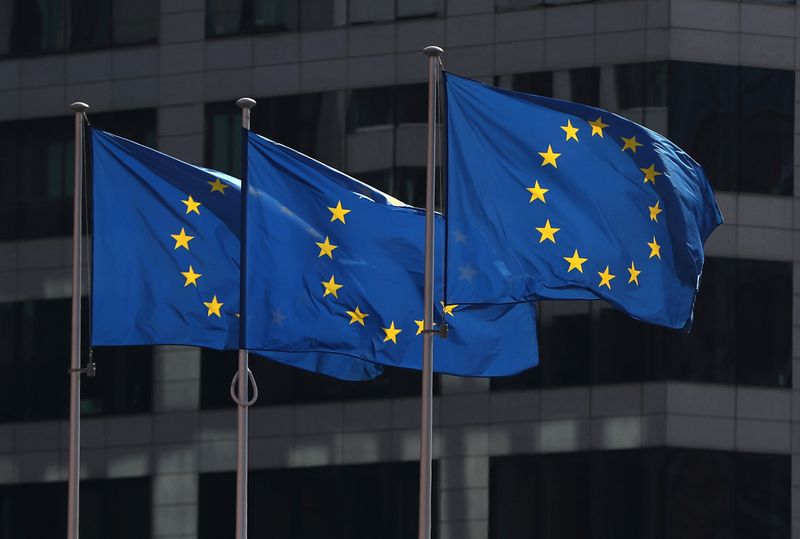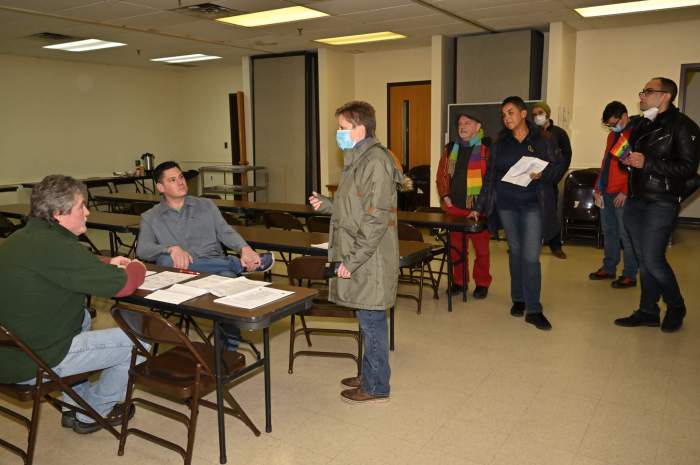BRUSSELS (Reuters) – Euro zone governments gave their final approval on Friday to the first part of a 540 billion-euro rescue plan for states hit hard by the coronavirus pandemic, although other elements of the rescue package have yet to be agreed on.
Finance ministers of the 19-nation region signed off on the details of cheap, long-term credit lines that will be made available by the European Stability Mechanism (ESM), the bloc’s rescue fund, to countries that need cash to cover extraordinary health costs caused by the outbreak.
“Reflecting the exceptional nature of the crisis, we have agreed on favourable and adequate financial terms,” the chair of the meeting, Mario Centeno, said after the online meeting.
However, it was unclear whether the money will be used by Italy, the country that most needs the loans, because of its high debt-servicing costs and the severity of the outbreak there, which has killed more people than in any other European state but Britain.
Despite repeated guarantees that money would flow with no strings attached, many in Italy’s 5-Star, the largest party in the ruling coalition there, remain opposed to using ESM loans, fearing that austerity measures may be imposed on the country.
The ESM, which played a key role in the rescue of Greece, Cyprus, Ireland, Spain and Portugal during last decade’s euro zone debt crisis, will offer credit lines worth 2% of the requesting country’s gross domestic product, and up to 240 billion euros ($260 billion) for the whole region.
The loans will be made available in the coming weeks, pending procedural approvals, and until the end of 2022.
They will have a 10-year maturity and will be granted at the very low interest rates enjoyed by the ESM when it issues new debt plus small fees and margins worth around 0.3% of the disbursed amount.
The ESM is often able to obtain negative rates on its bonds, while Italy is currently paying nearly 2% on its new debt.
States will be able to spend the borrowed money “to support domestic financing of direct and indirect healthcare, cure and prevention related costs due to the COVID-19 crisis,” the ministers said in a joint statement.
UNFINISHED JOB
The ESM is only one of the tools EU governments have considered to tackle the economic crisis caused by the pandemic, which is forecast to cause euro zone GDP to shrink by a record 7.7% this year.
Countries still need to finalise the other two legs of the rescue package worth another 300 billion euros combined: a temporary employment-support scheme and a guarantee fund that would provide liquidity to companies hit by the crisis. Final deals on these tools are expected by the end of the month.
Much more difficult appears to be the establishment of a recovery fund which could be worth 1 trillion euros and could provide grants and loans to help states revive their economies after the crisis.
“We are really at a crossroads. Either we are able to have a strong common response, but we are not there yet, or the entire project is at stake,” EU economics commissioner Paolo Gentiloni said on Friday, calling for the establishment in autumn of a separate recovery fund.
Countries remain divided over the way this fund would work and on whether it should also issue grants in addition to loans, with the Netherlands leading a group opposed to the idea of grants.
(Reporting by Francesco Guarascio @fraguarascio; Editing by Hugh Lawson)






















